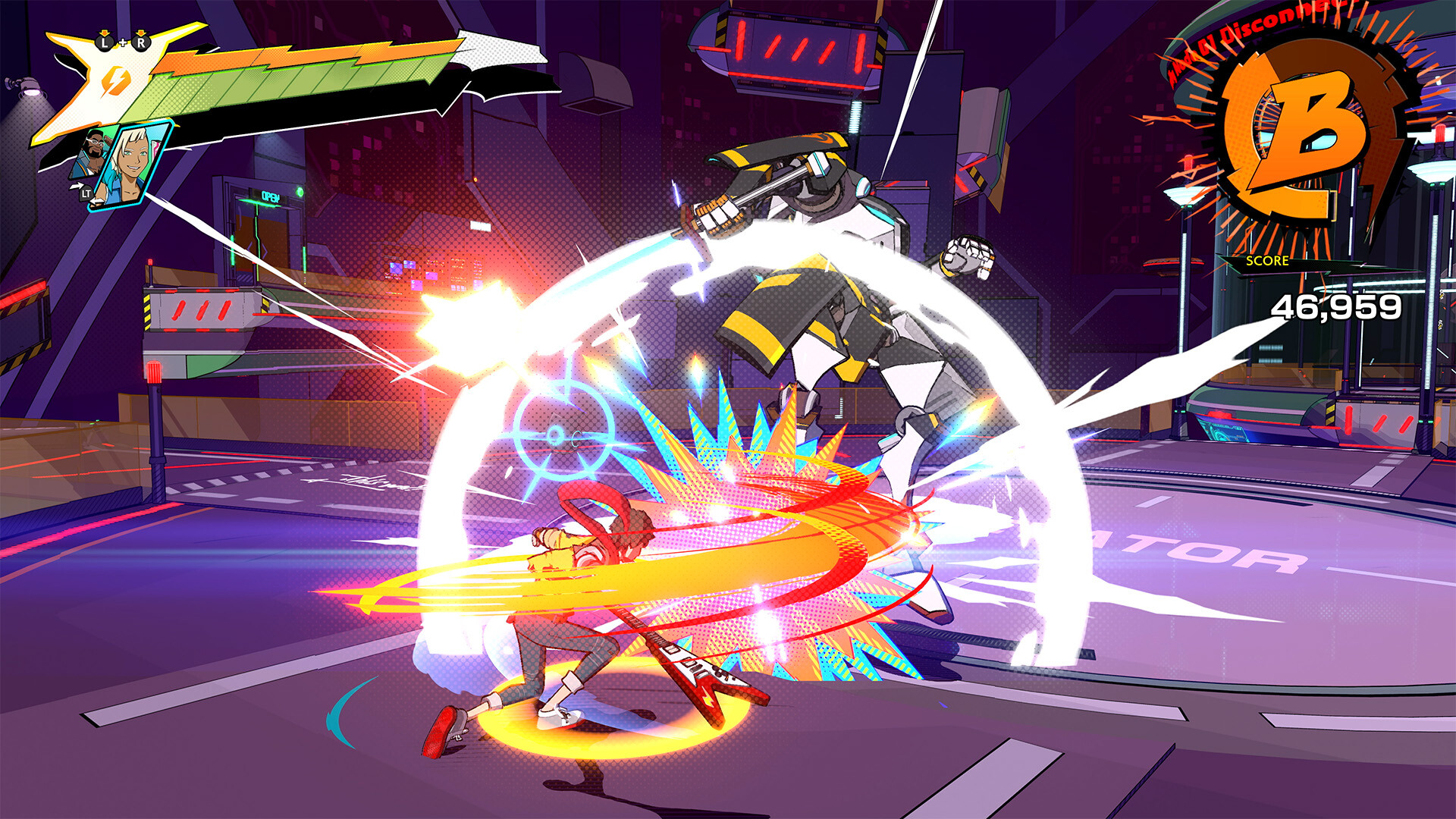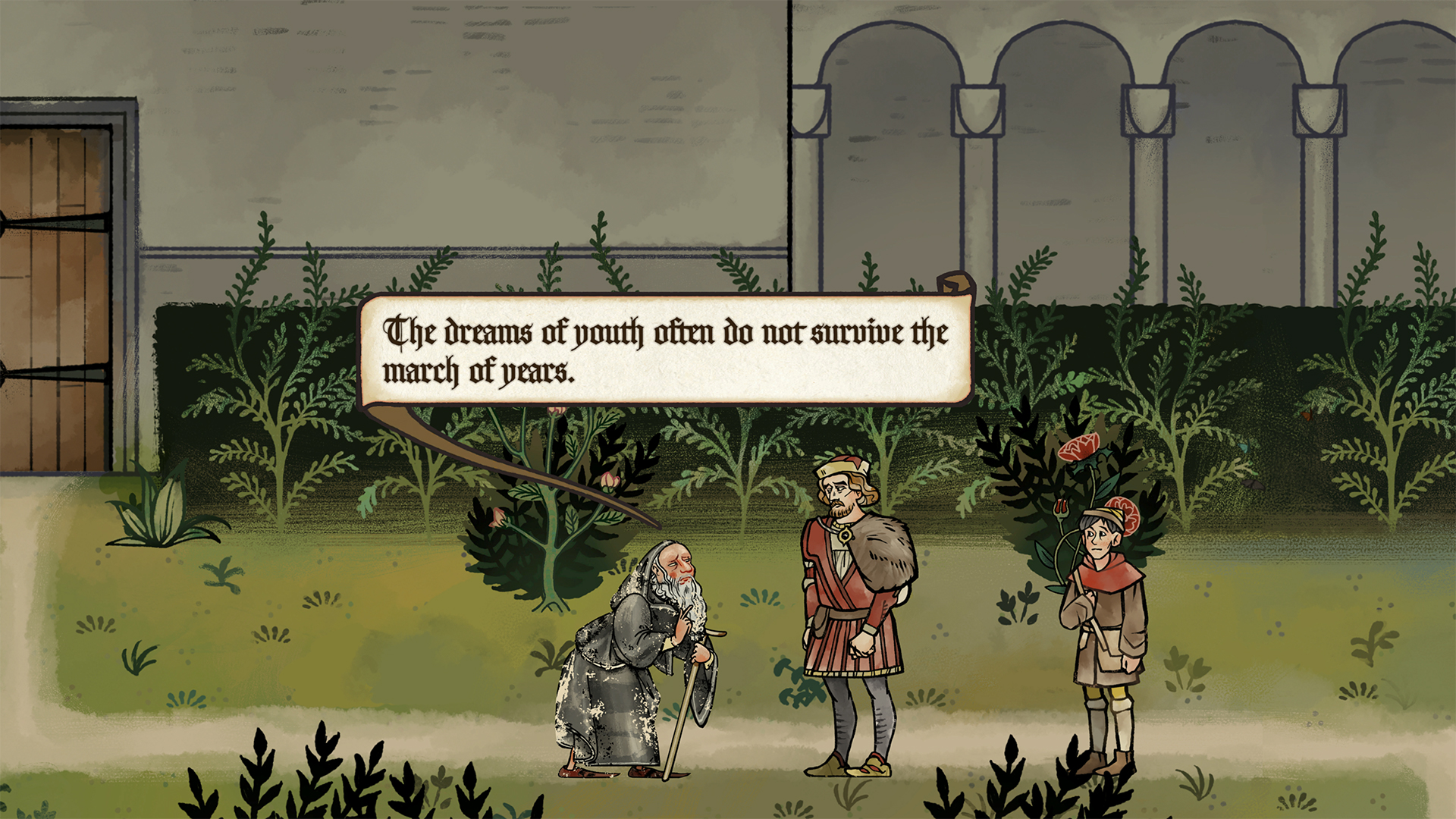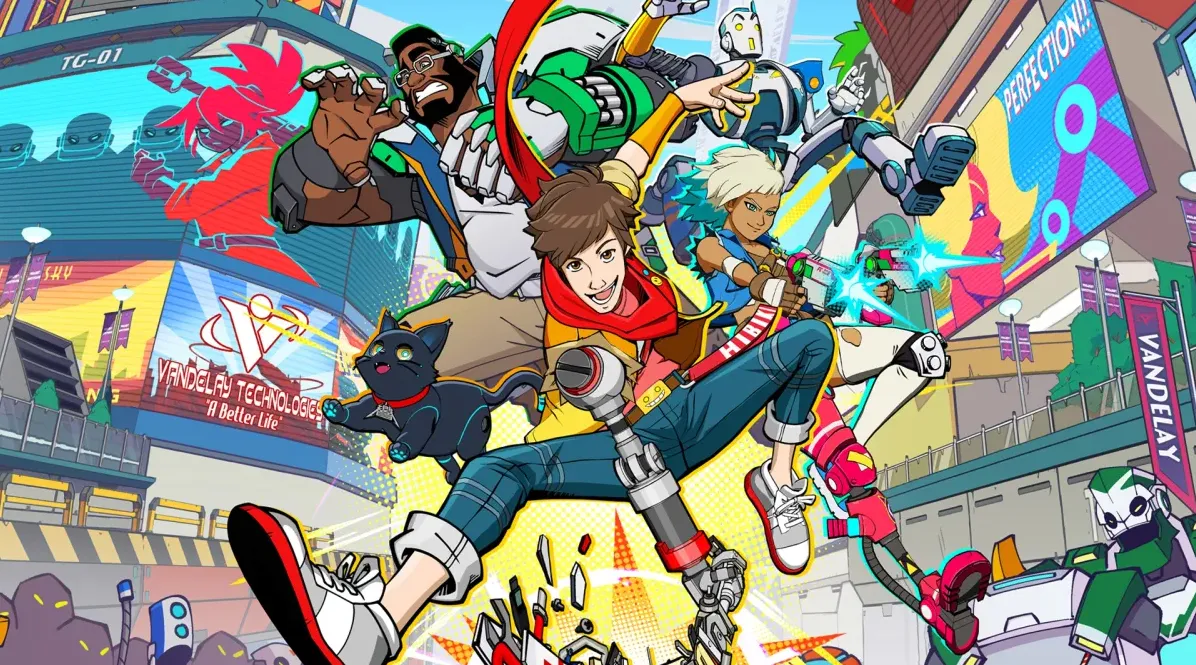At its frequent best, Hi-Fi Rush is an energetic, cathartic beast. The persistent, pulsing beat is a real toe-tapper, making it easy to put your brain on standby as you fight and platform your way through the sprawling complex of Vandelay Technologies. But the further you get through the game, the more the underlying structure becomes clear. The game uses the “rule of three” as the basis for a significant portion of its narrative and level design. That approach has value, but deployed as liberally as it is here, it isn’t as interesting as the folks at Tango Gameworks seem to think it is — and it’s frustrating how widespread that belief is in video games.
Around halfway through, protagonist Chai has to run the gauntlet of three combat test chambers, then three simulation chambers, and then repair three security nodes in relatively quick succession. Not long after, he faces off against the third story-relevant boss of the game, Korsica. In traditional rule-of-three fashion, Korsica is the first boss that you’re not just whacking with his guitar over and over and over again.
There are a whole lot of “threes” in that paragraph, and the insistence with which Hi-Fi Rush throws those challenges at the player highlights how tepid the game can be. Yet, it’s clear that Tango Gameworks hasn’t cobbled this suite of levels together thoughtlessly. In fact, they’re tapping into a narrative pattern that forms the fabric of some of the most resonant stories that we come across in our lives.
The rule-of-three pattern is foundational to a great many fairy tales and children’s stories: The Three Little Pigs, Goldilocks, and Cinderella, to name a bare handful. The structure makes its way into works for older readers too, for example, W. W. Jacobs’ “The Monkey’s Paw” or Charles Dickens’ A Christmas Carol.

The concept refers to a trebling in the narrative, most significantly in the structure of a story, as is the case in the above examples. The first iteration establishes the norm: The bed is too small or a wish goes awry. The second iteration establishes the rhythm through repetition: The bed is too large or another wish threatens nightmarish consequences. The third iteration provides either conclusion or subversion: The bed is just right or an earlier wish is reversed.
The rule of three is so effective because it’s so simple. It creates a pattern and pays it off as quickly as possible.
In games, the structure manifests at both macro and micro scales. As noted above, both can be easily spotted in Hi-Fi Rush, but it’s hardly the only example.
At the level of the complete narrative, 2018’s God of War used the rule of three during Kratos and Atreus’ journey to the mountain by having them think they’d reached their destination twice before they finally did. The first time saw them learning the peak they sought was in another realm; the second time saw the gateway to that realm destroyed just as they reached it. Pentiment is a more recent example, with its central conceit of having you solve crimes across three distinct periods in the history of a 16th century Bavarian town.
On the scale of those examples, that pattern of repetition isn’t particularly onerous. You can see it as padding if you choose, but that doesn’t prevent the rule of three from being an entirely reasonable part of the way those stories play out. Where it gets frustrating is when the moment-to-moment objectives come to rely on your doing the same thing — with only slight variations — over and over again.

Marvel’s Avengers has several missions where one of the objectives is to hold three control points simultaneously. Death Stranding requires you to connect three distinct regions across North America to form the fully operational chiral network. Psychonauts 2 has a few situations where you have to collect three items to proceed, including coins and typewriter keys. Meanwhile, Darksiders III is self-aware enough to poke fun at the rule of three in the midst of one of its puzzles.
Because of its capacity to iterate on core puzzle or combat design and step up difficulty in a way that players can easily understand and telegraph, it’s no surprise that the rule of three is so common in video games. Moreover, there’s a good reason for it. It’s an established feature of storytelling that has more than stood the test of time, and it translates well to games. Even outside of video games, we see best-of-three challenges in sport, like the State of Origin and triad-based games like rock, paper, scissors.
Thinking about all the examples listed so far, you could be forgiven for thinking that they don’t all connect to the same core theme. But that’s the beauty of the rule of three: Its power stems from its simplicity, which in turn guarantees its versatility.
Before all else, it is a pattern — a very, very useful pattern. When it comes up short, it isn’t because of any inherent problem with the idea but rather in the execution. And that’s the problem I have with where I’m at in Hi-Fi Rush. The pattern feels embedded into the very fabric of the game, which means that the dynamism of the gameplay isn’t reflected in the experience of play.
I’m not asking developers to stop relying on the rule of three — just to recognize when their adherence to it is making their video games boring.







Published: Feb 13, 2023 07:12 pm